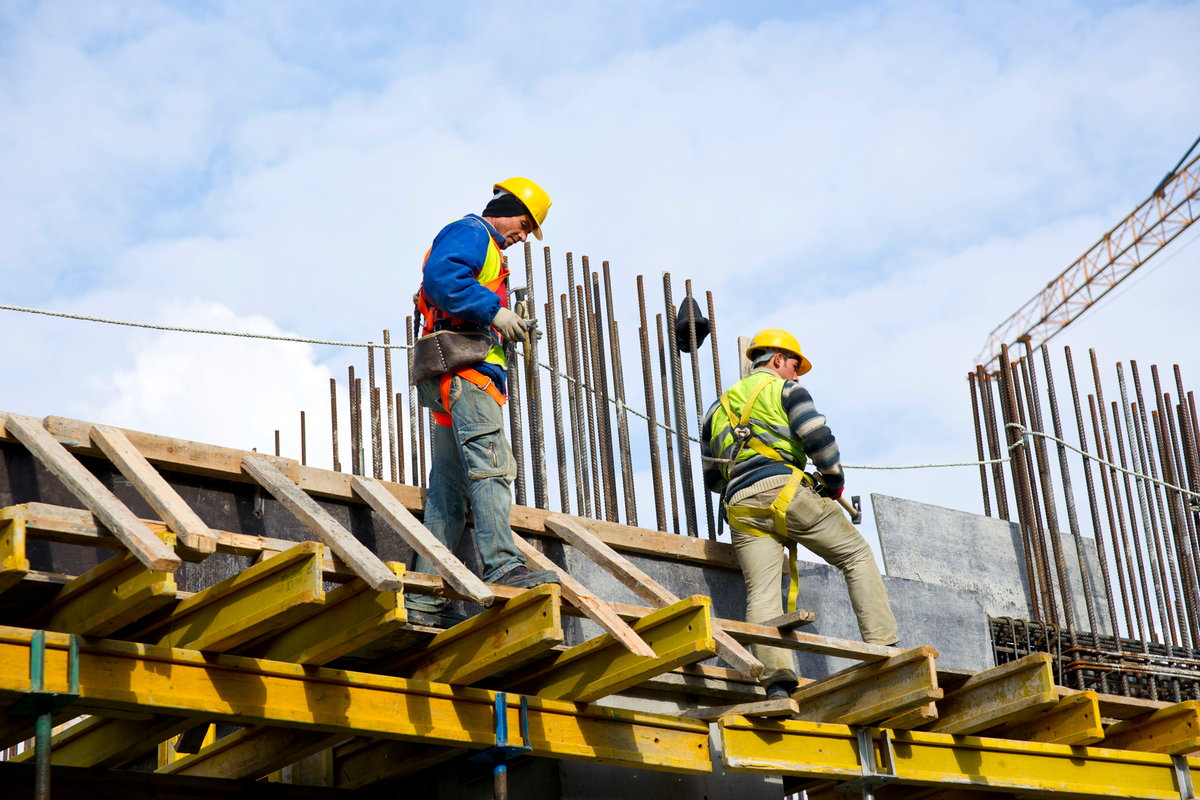Exclusive Neuroject Article: Quality Control in Construction is a systematic process used to make sure that projects are completed to the required specifications, laws, and customer demands. Whether it’s a building, a piece of infrastructure, or any type of construction project, making sure the result is excellent quality, secure, and long-lasting is a crucial component of the construction business.
Including Quality Control in the Construction process in the project is the best way to guarantee client satisfaction. Strict process compliance leads to better work delivery, which reduces rework and increases profits for the company. In this article, we go over 10 tips about Quality Control in Construction to help you acquire knowledge more.
Table of Contents
What is a Quality Control in Construction?
A management system called Quality Control in Construction makes sure the final product adheres to the standards and regulations established by the client. That entails finishing the project within the agreed-upon parameters and preventing conflicts throughout the project. Clients, regulatory bodies, environmental standards, and policy directives all define quality. A Construction quality management plan contains a list of all these procedures and requirements for quality assurance.
A project manager typically oversees Quality Control in a Construction project. They also answer to senior management and the client. Once the client and the construction team agree on the project specifications before the project begins, these notes become a guide for the project as it develops. Quality construction adheres to the exact specifications of the client and attempts to provide exactly what the client asked for while maintaining safe building practices.
Quality assurance (QA) and quality control (QC) are the two facets of construction quality. The goals for and methods for achieving quality are established by quality assurance. The strategy to accomplish this is quality control. This quality management plan is implemented by the construction quality control manager at all stages of the project.

Quality Control (QC)
Quality Control in Construction entails routine inspection of the construction sites and facilities to fulfill the necessary standardization as per the contract.
A team of QC engineers or specially trained teams do quality control. For instance, monitoring the soil density is used as quality control for compaction work done for highway projects. The slump test aids in detecting if the concrete is workable. While quality control involves inspection or sample procedures, quality assurance establishes a plan for the effective management of building operations. Quality assurance concentrates on:
- Establishing and upholding strict construction standards
- Identifying the standards that have been violated
- Bringing about and implementing corrective action to lessen variation
- Standard development across time
Suggested article for reading: Construction Monitoring Solutions
Quality Assurance (QA)
Quality Assurance (QA) is a systematic process in various industries to ensure products, services, or processes meet established standards and customer requirements. Its primary goal is to maintain and improve overall quality, leading to customer satisfaction, reduced defects, and increased efficiency. Key aspects of QA include defining standards, conducting process monitoring, corrective and preventive actions, documentation, training and skill development, and feedback and continuous improvement. QA is widely practiced in various sectors, such as software development, manufacturing, healthcare, and education, to ensure accurate diagnosis and reliable treatment protocols. Overall, QA plays a crucial role in fostering trust, reliability, and customer satisfaction, essential for the success of any business or industry.
What is the significance of Quality Control in Construction?
If your client isn’t satisfied, your project doesn’t succeed. Quality Control in Construction is essential because it raises customer satisfaction. A satisfied customer will do business with you again and even recommend you to others. Doing quality work requires less rework. Costs are cut and you stay on schedule when work that should have been completed correctly the first time isn’t required to be redone. Additionally, by doing this, you can keep the morale of your team high, which will help them be more productive at work.
Quality can harm your capacity to complete closeout and guarantee that all quality issues are addressed throughout a project. An Autodesk and Dodge Data & Analytics report found that 68% of general contractors said they have trouble “getting off the job” on at least 25% of their projects, indicating the severity of the issue in the sector. A “high” to “very high” negative impact on their profitability, according to nearly 60% of respondents, is also stated by this.
Poor quality can waste time, resources, and materials in addition to having an adverse financial impact. Better processes and workflows make it easier for a job to advance on schedule and without the need for rework, which leads to higher-quality construction and increased project efficiency.
The fact that construction quality control results in a successful project is what matters most. Your work’s quality will determine how well a project is managed in the construction industry. Fewer issues and changes result from a quality-focused approach, which also saves time and money.

Quality Control in Construction Benefits
- Client Satisfaction: A high-quality construction job is more likely to gratify your client and open the door to future collaboration on construction projects. It also boosts your chances of getting new employment as a result of your client’s positive recommendation.
- Encourage Quality Consciousness: Quality control encourages employees to keep quality in mind throughout the Construction process, which can help the company achieve the desired level of quality each time.
- Building Corporate Morale: Quality Control in Construction also provides team members with the security of job safety, allowing them to focus on accomplishing jobs with perfection. Feeling safe at work fosters a positive atmosphere and promotes morale.
- Cost Savings: Quality Control in Construction can save money by ensuring high-quality construction with fewer errors. Teams can move rapidly to another project by finishing on schedule and with few faults, avoiding costly revisions.
- Improve Construction Techniques: Quality Control in Construction processes aid in the streamlining and improvement of Construction processes, resulting in improved methods and designs and, in many cases, higher productivity.
- Improved Safety: Quality control in construction helps to protect the safety of everyone participating in the construction project by identifying and correcting any potential dangers that may develop during the construction process. This involves ensuring that the materials used are of the required quality and that the craftsmanship is of the required standard.
- Early Detection and Correction of Errors: Quality control in construction inspections and testing during the planning, design, and building stages can assist in identifying and correcting any faults or discrepancies that may develop before they become larger and more costly problems later in the project.
- Properly Preparing the Site: Quality control procedures such as site inspections and testing can help to ensure that the site is properly prepared and that the essential permits and approvals have been received. This can help to minimize costly mistakes and rework that may be required if the site is not properly prepped.
Suggested article for reading: Construction Safety

List of 10 Tips For Quality Control in Construction
Here are 10 tips you can follow for effective Quality Control in Construction:
1. Create a Checklist
Making checklists can also help you remain on top of forthcoming projects and customer requirements. You may distribute checklists to your team before the start of the project to provide them with extra instructions and prompts on how to fulfill their responsibilities. This allows team members to check their quality as the project proceeds. Consider incorporating the task, the name of the person executing the assignment, who is in charge of the task, the task deadline, and significant project parameters.
Use specific terminology while establishing your checklist to verify the quality matches expectations. Instead of words like “done” or “looks good,” consider using categories like “meets client expectations” or “still needs work” with room for clarifying remarks.

2. Perform Regular Inspections
The building being constructed must be examined before construction starts as part of the criteria for the building permit. The minimally acceptable standard of quality is represented by the building code. To guarantee the caliber of the job, further inspections by the superintendent, project manager, special inspectors, and other stakeholders should be employed.
The superintendent often inspecting the work with the foremen of the subcontractors is an excellent practice. This process aids in reassuring the construction teams that quality is a crucial component of the project and will be closely inspected. This conveys the idea that quality is just as crucial as time and money constraints. Then, throughout the actual construction process, any flawed work should be redone without compromise. Making exceptions or allowing poor work to go unpunished will only lead to problems and headaches for construction managers in the future.
It is also advisable to ask the owner and designer to check the construction work as you get closer to finishing each stage of the project before it is covered up. Before moving on to the subsequent phase, this might be used as a quality control check.

3. Hire Experienced Workers
There is no doubt that there is a manpower shortage in the trades and the building business. According to research, skilled tradespeople are hard to come by. The hardest-to-locate workers were carpenters, concrete workers, pipelayers, sheet metal workers, and iron workers, although nearly all categories had a contractor inability rate of at least 50%.
Make sure your teams are comprised of the most qualified individuals before beginning your project. Put the proper personnel in the correct jobs, and make sure your supervisors or foremen understand the standards for quality. Give them the freedom to oversee their workers as necessary to meet these demands.
Make certain the construction crew is aware of the project’s quality criteria. They should first attend a project induction before beginning work on the project, which is where it all starts. Aside from addressing safety, this induction is an opportunity to outline the policy regarding unacceptable quality. From the outset of the project, high criteria should be established. To foster pride in one’s work, workers must be motivated.

4. Embrace Construction Technology
There are various productivity software tools for the construction industry to address the frequent issues that arise during the quality control process. Miscommunication, outdated documents, and other similar issues are less likely when there is open communication among the various parties involved in the same project.
The execution can be made more straightforward by consolidating all the project documents, drawings, and pertinent reports onto a single software platform for viewing, collaboration, and conflict resolution.

5. Use the Right Materials
The building materials used by the construction crew should adhere to the project’s specifications and quality standards. As a result, you must make sure that the materials you order are designed according to the project’s criteria. Aside from making sure the supplies are what you ordered and undamaged, you also need to verify that your supplier has delivered the materials you requested. To prevent the building crew from mistakenly using any damaged or inappropriate supplies, it would be smart to reject them, let the supplier know, and then designate them as non-compliant.
Suggested article for reading: Green Building Materials

6. Mock-Ups and Samples
A mock-up is an essential part of pre-construction work to make sure that everyone agrees to the work to be done. The mock-up need not be a replica of the anticipated final product, but it must nevertheless adhere to the specifications outlined in the contract terms.
Before the work is carried out on a big scale, this tiny sample of the project can be used to address any worries, talk about issue areas, and reach a consensus on how to balance cost, time, and quality. Mock-ups are a fantastic tool for giving the owner and designer a precise idea of the caliber that can be anticipated with the finished result. However, avoiding making too many promises and not keeping them is crucial.
You may run into problems at the end of the project if the final result is inferior to the mock-up and cannot match the quality the owner purchased. Be careful not to mislead the owner’s expectations. Using the mock-up as a tool to assist in graphically representing the job is a recommended practice.

7. Use of Qualified Contractors
It can be tempting to choose contractors who will work quickly and for less money than the market rate to assist you meet two of the three demands (time, cost, and quality). But poor work frequently causes quality problems that negate the advantages you are attempting to attain.
Only contractors and subcontractors who have been prequalified for the project ought to be permitted to submit bids. Contractors and subcontractors must be able to unequivocally show, as part of the prequalification process, that they possess the expertise and credentials required to accomplish the scope of work to the required standards.
If a contractor or subcontractor is not prequalified, it is the construction manager’s responsibility to determine whether each bidder is qualified to complete the work before giving them the project. You can be in danger, as well as your business. For your company’s benefit, it is excellent practice to confirm and authenticate each entity’s credentials.

8. Make Workflows Clear
Workflows can be used to assign jobs to workers in a hierarchy such that no one person is in charge of quality control for any given task. By outlining each team member’s unique responsibilities for the project, clear processes define each member’s position. Team members can work more closely together to ensure that every component of the project adheres to the requirements of the client by having roles that are more clearly defined.
9. Audits and Tests
Testing must be performed to verify that the construction is accurate and of a high caliber. If a test is unsuccessful, the constructors must start over. As a result, appointing the appropriate employees to carry out quality control can assist avoid a disorganized workflow and situations in which the incorrect personnel audit the incorrect items at the incorrect times. The correct auditing company may assist in producing high-quality construction projects by ensuring that tests are conducted, reports are rarely lost, and work standards are maintained.
10. Manage risk
You can do risk assessments throughout the project to ensure that it is meeting the client’s expectations and to foresee any potential issues with safety, zoning, legal issues, or cash flow.
The best interests of your workforce, your business, and the client’s expectations are all taken into consideration when assessing risks. Make a plan for preventing these risks or minimizing their effects during the project’s development by keeping an eye out for them.
Conclusion
The significance of construction quality is well known. Quality control in construction not only reduces the likelihood of delays. However, it also makes sure that the project satisfies customer needs and expectations. Conducting inspections of the tools and supplies used in the construction project is one typical quality control technique.
To provide quality control in construction, it is essential to have enough resources, training, communication, coordination, and risk management. Quality control can help ensure that the project is finished to the required standards, within budget, and on time by spotting and fixing errors early on, improving workmanship, using the right materials, properly preparing the site, and meeting the client’s requirements.
Resources:
Project Manager| Indeed | Carnegie Mellon University | Quality Engineer Stuff | AIC Builds | Construction Placement | PlanRadar | The Constructor |
For all the pictures: Freepik




